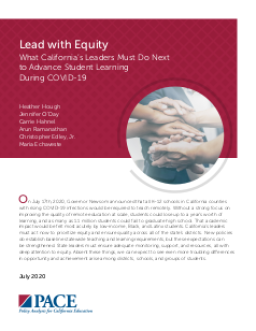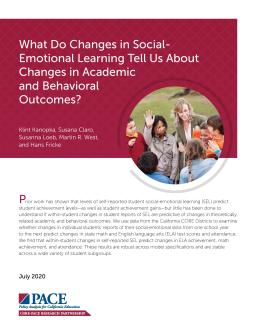What California’s Leaders Must Do Next to Advance Student Learning During COVID-19
Published
Summary
Governor Newsom announced that rising COVID-19 infections would require remote learning for K-12 schools in California counties. However, without quality remote education at scale, up to 1.1 million students could fail to graduate high school, affecting low-income, Black, and Latinx students the most. California's leaders must prioritize equity, strengthen teaching and learning requirements, and ensure adequate monitoring, support, and resources with deep attention to equity to avoid further differences in opportunity and achievement among districts and students.
Published
Summary
This study used data from California CORE Districts to explore whether changes in students' self-reported social-emotional learning (SEL) predicted changes in academic outcomes and attendance. The findings revealed that within-student changes in SEL were positively associated with improvements in English language arts (ELA) and math achievement, as well as attendance, and were consistent across various student subgroups.
Published
Summary
Governor Newsom suggested a staggered calendar for the fall to get students back in school. While multi-track calendars have shown slight negative effects on learning, the current situation would have clear learning benefits and help parents and teachers. However, there is no evidence that multi-track calendars can control COVID-19 transmission. Schools should look at evidence from other countries and partner with local communities to test aggressively for the virus if implementing this approach.


